Extinction has been around since the beginning of life, but in recent decades scientists have seen an unprecedented rate of animal extinction. Many species of animals are forecast to go extinct shortly, with estimated extinctions as soon as 2023.
In this article, we will discuss some of the most likely candidates for extinction and what we can do to help prevent it from happening.
List of Extinct Animals in 2023
Extinction has existed since the beginning of life, but scientists have seen an unprecedented rate of animal extinction in recent decades. Many species of animals are forecast to go extinct shortly, with estimated extinctions as soon as 2023. In this article, we will discuss some of the most likely candidates for extinction and what we can do to help prevent it from happening.
1. Tigers
The Bengal tiger, Indochinese tiger, Sumatran tiger, Siberian tiger, and Malayan tiger all feature on the endangered animal list, with the Malayan and Sumatran subspecies being classified as critically endangered. Sadly, only around 3,500 tigers exist in the wild, and given the ongoing danger to their habitats, it’s possible that tigers could face extinction by 2023.
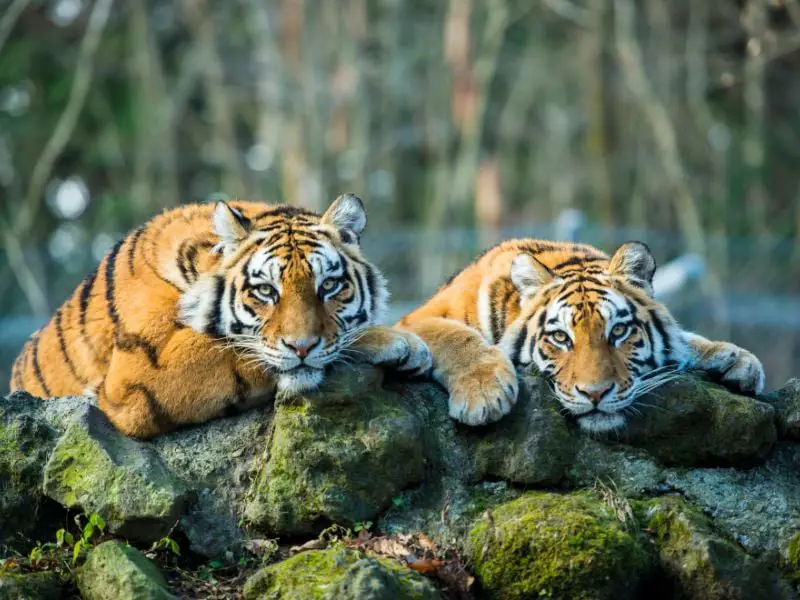
What’s causing its extinction?
The primary causes of the decline and potential extinction of the Bengal, Indochinese, Sumatran, Siberian, and Malayan tigers are human activities, including habitat loss, poaching, and human-wildlife conflict. Tigers require large areas of intact forest habitat to survive. Still, deforestation, urbanization, and agriculture have reduced prey availability and forced tigers to contact humans more frequently, increasing the likelihood of conflict. Poaching for traditional Asian medicine, luxury goods, and competition for resources like land, water, and prey also threaten tiger populations. Conservation efforts to protect tiger habitat, combat poaching, and reduce human-wildlife conflict are crucial to survival.
2. Orangutans
The Bornean and Sumatran subspecies are the hardest hit among orangutans. The Bornean orangutan population has dwindled to slightly over 100,000, while the Sumatran subspecies has declined to just over 7,000. The main reason for the loss in the orangutan population is forest degradation, mainly caused by the pursuit of palm oil.
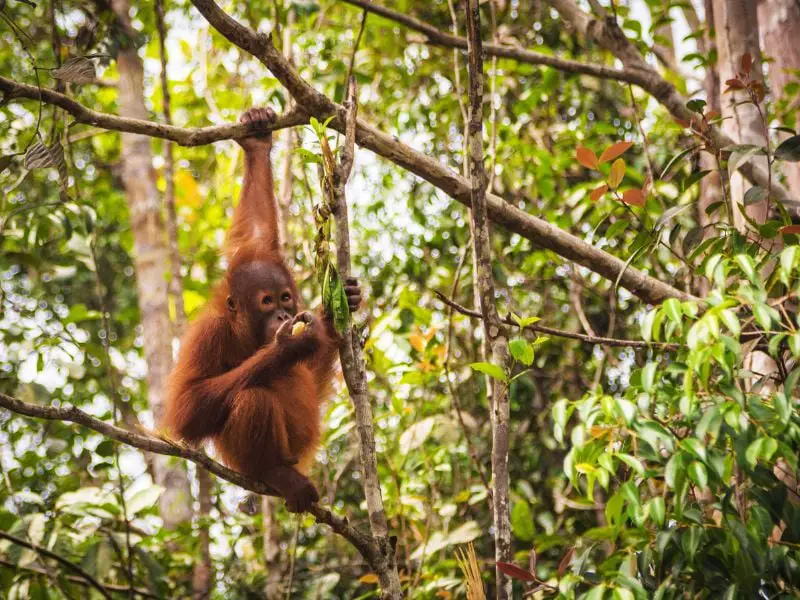
What’s causing its extinction?
Human activities primarily threaten orangutans, such as habitat loss due to deforestation for agriculture, logging, and mining. This has fragmented and isolated their populations, limiting access to food, mates, and suitable habitats. The illegal pet trade and hunting for bushmeat are also significant threats. To ensure their survival, conservation efforts are needed to protect their habitats, combat poaching, and promote sustainable land use practices.
3. Leatherback Turtles
Leatherback sea turtles are so named because of their large, leathery shells. These magnificent sea creatures are unique among turtles, possessing four legs that help them easily navigate their environment. They are also known for their remarkable migratory behavior, with populations in the Atlantic, Pacific, and Indian oceans. Unfortunately, their numbers have decreased due to bycatch fishing and excessive loss of their eggs, making them a crucial species that can go extinct in 2023.

What’s causing its extinction?
Sea turtles confront perilous dangers in both their nesting habitats and marine environments. Incidental capture in fishing gear, or bycatch, among these hazards present the gravest threat worldwide. Additionally, sea turtles are subject to hunting, and their eggs are collected for human consumption. The continued persistence of these threats puts the survival of sea turtle populations in jeopardy, emphasizing the urgent need for concerted conservation efforts.
4. Addax
The Addax is a family of grazers that inhabit the Niger region and are critically endangered, with less than 100 remaining. Unfortunately, human activities such as unauthorized hunting and oil exploration have led to their declining population.
The IUCN has declared Addax as critically endangered due to the continued decline of its population. Immediate measures must be taken to protect these unique creatures from the threats posed by human activities such as hunting and oil exploration in their natural habitat.

What’s causing its extinction?
The Addax, a Sahara desert antelope, is facing extinction due to overhunting, habitat loss from agriculture and development, and the impacts of climate change, such as more frequent droughts. These factors have significantly reduced the Addax population, leaving them critically endangered. Immediate conservation measures, such as habitat protection, anti-poaching efforts, and captive breeding programs, are necessary.
5. Vaquita
The Vaquita, a small porpoise discovered only in the Gulf of California, is on the verge of extinction, making it the most critically endangered cetacean on the planet. With an estimated population of fewer than ten individuals living in the wild, urgent action is needed to save the species from disappearing forever. A complete and rigorously enforced ban on gillnets throughout their entire habitat is crucial to ensure their survival. The World Wildlife Fund (WWF) is taking immediate and strategic action to protect the Vaquita and its habitat, aiming to enable them to thrive in their natural environment once again.
What’s causing its extinction?
The Vaquita is on the brink of extinction primarily due to accidental entanglement in fishing nets or bycatch. The use of gillnets to catch fish and shrimp in the Gulf of California is the leading cause of Vaquita bycatch, as they often become entangled and drown in the nets. Other threats to the Vaquita include pollution, habitat degradation, and illegal fishing.
6. Javan Rhinoceros
The Javan rhino, a subspecies of rhinoceros, is critically endangered, with only 67 remaining. These elusive creatures reside in a park on the southwestern end of the island of Java, contributing to their seclusion.
Due to their critically low population, the Javan rhino has made it onto the list of animals in danger of extinction. Efforts must be made to protect these creatures and preserve their habitat to ensure their continued survival for future generations.
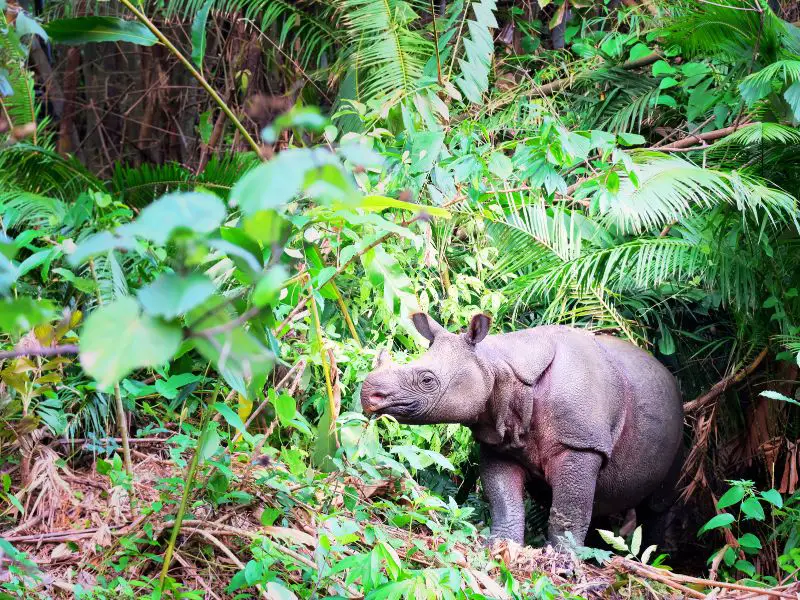
What’s causing its extinction?
The Javan Rhinoceros is on the brink of extinction primarily due to habitat loss and poaching. The species once ranged across Southeast Asia, but deforestation, agricultural expansion, and human settlement have reduced their habitat to just a few isolated areas. This has left the Javan Rhinoceros vulnerable to poaching for their horns, which are highly commended in traditional medicine and as a status symbol. The species has a low reproductive rate, and the loss of even a few individuals can significantly impact the population.
7. Yangtze Finless Porpoises
Finless porpoises are at risk in the Yangtze River due to fishing and pollution. The species is often caught accidentally in fishing nets and face threats from boats and ships that navigate the busy waterways.
Urgent conservation measures are needed to protect finless porpoises from extinction within the next ten years. Efforts must be made to reduce accidental deaths from fishing gear, minimize the impact of boats and ships, and reduce toxic pollution levels in the waters they inhabit.
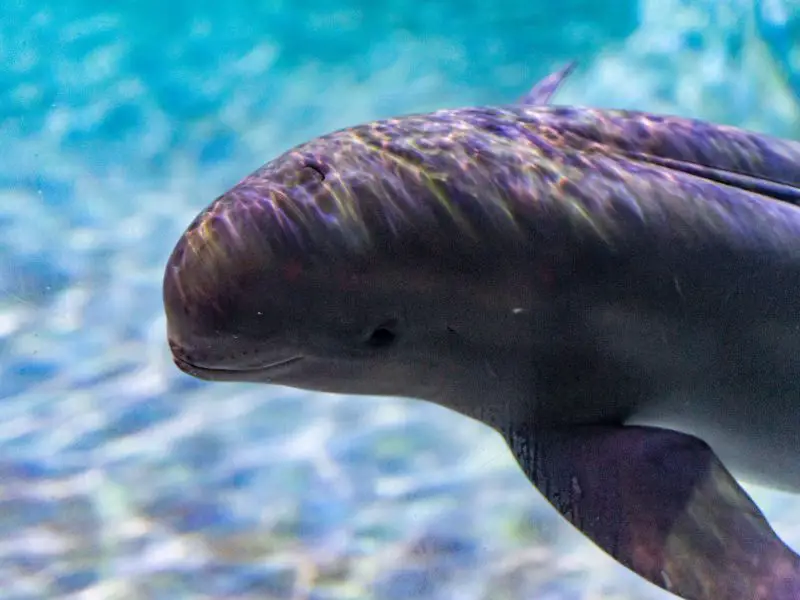
What’s causing its extinction?
The Yangtze Finless Porpoise is on the brink of extinction primarily due to habitat loss and degradation, overfishing, pollution, and dam construction. The porpoises once inhabited the entire length of the Yangtze River in China, but their population has declined sharply in recent years. The construction of dams and water infrastructure projects has altered their habitat and disrupted their migratory patterns, while overfishing has reduced prey availability.
8. Elephants
Although some African elephant populations are increasing in southern Africa, numbers are decreasing in other areas, especially in central and East Africa. The species is considered vulnerable, with an estimated 415,000 elephants remaining on the continent.
Asian elephants have declined at least 50% in their numbers over the past three generations, making the species endangered, with only 40,000-50,000 left in the wild. The Sumatran elephant is the most at risk, with a small population of 2,400-2,800 individuals remaining.

What’s causing its extinction?
Once widespread throughout Africa and Asia, elephant populations have experienced a dramatic decline over the last century. Today, these majestic creatures face numerous threats that put their survival at risk. African elephants, in particular, are highly vulnerable to poaching for the illegal ivory trade, devastatingly impacting their numbers. In contrast, habitat loss is the primary threat to Asian elephant populations, often leading to human-elephant conflict as these magnificent animals compete with humans for resources.
9. Irrawaddy Dolphins
Irrawaddy dolphins are unique in that they have blunt snouts and rounded foreheads instead of streamlined bodies and beaks like most dolphins. They are also among the few species surviving in fresh and saltwater environments. However, with just over 80 of these dolphins remaining and the threat of bycatch fishing, they are one of the most endangered animals in 2023 and require urgent attention to prevent their extinction.
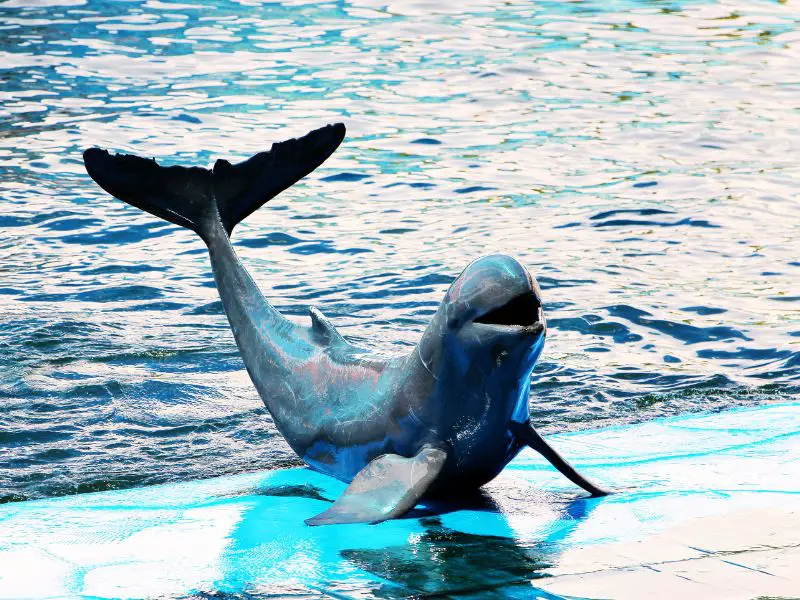
What’s causing its extinction?
The Irrawaddy Dolphin is on the brink of extinction primarily due to habitat loss, pollution, and accidental entanglement in fishing gear or bycatch. The dolphins inhabit shallow coastal areas and freshwater rivers in Southeast Asia, but their habitats have been degraded by human activities such as dam construction, deforestation, and mining. This has reduced the availability of prey and disturbed their migratory patterns. Pollution from agricultural and industrial runoff and waste disposal has also impacted the dolphins’ health and survival.
10. Black Rhinos
Black rhino populations experienced a significant decline in numbers due to large-scale poaching between 1960 and 1995, with only around 2% surviving the onslaught. While rhino conservation efforts have helped increase their numbers by more than double since the 1990s, black rhinos are still classified as critically endangered by the IUCN, with only around 5,630 individuals remaining in the wild.
Today, three subspecies of black rhinos survive, and the biggest threat to their survival is poaching for their horns, with almost 10,000 African rhinos killed in the last decade to supply the illegal rhino horn trade.
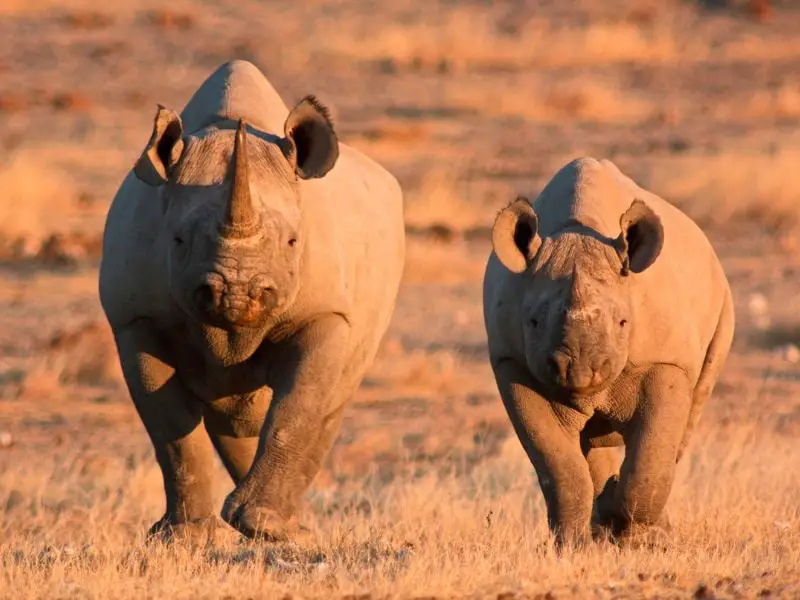
What’s causing its extinction?
The decline of rhino populations can be attributed to poaching and the loss of their natural habitats. Human activities such as agriculture, settlement expansion, and infrastructure development have resulted in habitat loss and fragmentation, leaving rhinos vulnerable to poaching and inbreeding. This loss of habitat and subsequent isolation of rhino populations significantly impacts their survival and genetic diversity, making it more challenging for them to adapt to changing environments and threats.
11. Hawksbill Turtles
The Hawksbill turtle is one of the seven marine turtle species and inhabits the tropical and subtropical waters of the Atlantic, Indian, and Pacific Oceans. Their true population numbers are challenging to assess, with an estimated 20,000-23,000 nesting turtles.
However, in the last three decades, their worldwide population has declined by at least 80%, mainly due to accidental capture in fishing gear, coral reef damage, nesting habitat degradation, illegal hawksbill shell, and product trading.
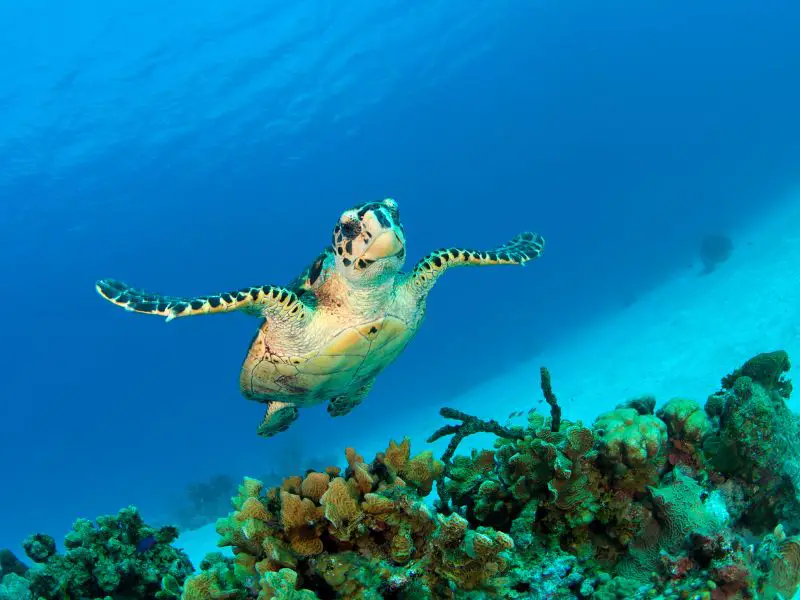
What’s causing its extinction?
The hawksbill turtle, a magnificent marine species, faces a significant threat to their survival – the loss of their nesting habitat and coral reefs. This loss is primarily due to coastal development, pollution, and rising sea levels from climate change. Unfortunately, this species’ nesting beaches and coral reefs are increasingly being destroyed by human activities such as coastal development. Shoreline hardening, including seawalls and other forms of infrastructure, can cause the complete loss of dry sand, which is crucial for successful nesting.
Related: Caribbean Lionfish, Threat of Trawl Fishing, Carnivore Diet, Invasive Species in Michigan
What Can We Do as a Collective?
Here are five ways you can contribute to conserving wildlife and their environment and support local communities:
- Engage with the conservation community by supporting park rangers and donating to foundations that care for orphaned and injured wildlife.
- Visit national parks to promote sustainable tourism, support the wildlife economy, and appreciate nature.
- Reduce the demand for illegal wildlife products by not purchasing items made from these parts.
- Learn about the risks to wildlife and their habitats, and reduce your carbon footprint to preserve forests, nature, and oceans.
- Use your network to inspire others to take action by spreading awareness about the issues facing different species and communicating the situation’s urgency.
The list of extinct animals in 2023 is a stark reminder of the consequences of human actions on the environment and the delicate balance of ecosystems. The extinction of these animals impacts the planet’s biodiversity and has significant economic and social implications.
While some species have already disappeared, it is still possible to prevent others from becoming extinct by taking urgent conservation measures. It is crucial to raise awareness, promote the protection of endangered species, and address the underlying causes of their decline. By working together and taking action, we can help to preserve the world’s natural heritage for future generations. The extinction of species is not inevitable, and we must take responsibility for protecting the planet’s biodiversity.


2 thoughts on “The Silent Cry: Extinct Animals in 2023 and the Urgency to Preserve Wildlife”